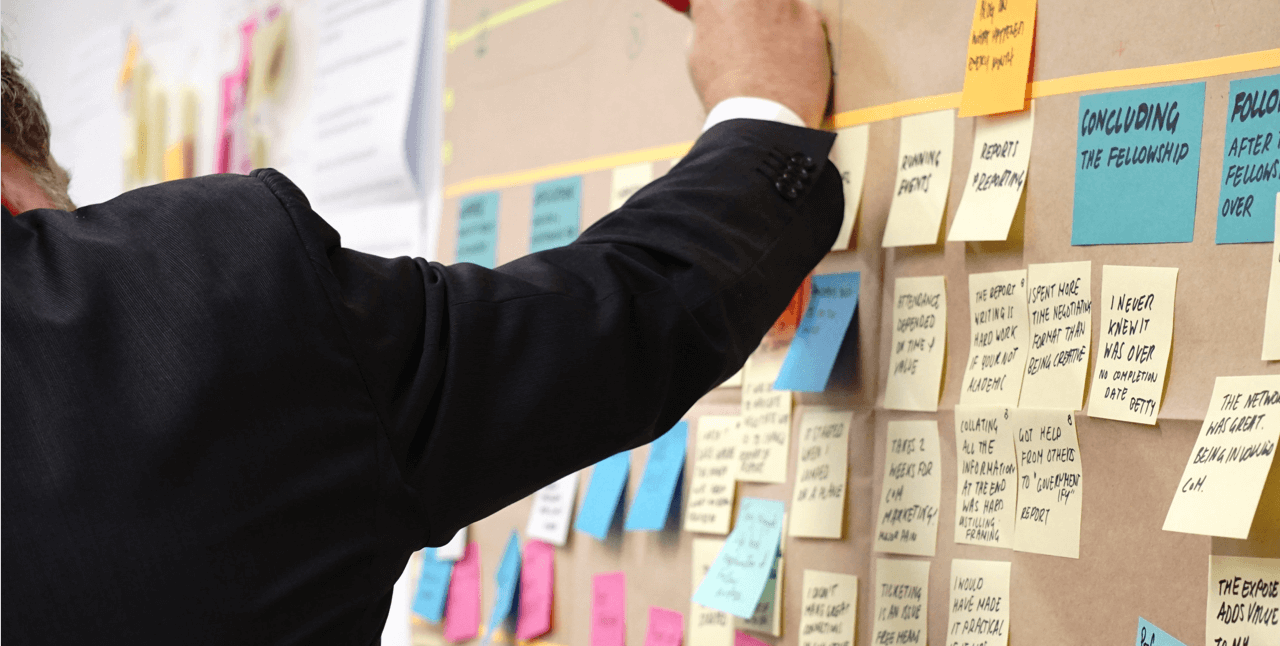
Photo by Jo Szczepanska on Unsplash
Why create design principles?
As a new UX team, we quickly identified that we needed a way to build a shared understanding of what good design looks like across the business. We also needed a way to help steer design in the right direction and a way of measuring success of design. So, we decided to create a set of design principles. Design principles help everyone to think about design, measure design success and establish what good looks like. To create a set of principles for the team, I helped plan and facilitate the workshops, where we collaboratively crafted them.
Creating our design principles
Step 1 - Doing some research
To help establish what we meant by design principles and to provide some inspiration, we talked through a couple of examples from different types of businesses.
Step 2 - First round of ideation
We gave the team 5 mins to come up with some key words about what is important to us in design, as individuals, to allow for individual thought.
We then asked for everyone to put their post-its under a covered sheet on one side of a board.
Step 3 - Second round of ideation
We then got the team into groups and spent 10 minutes coming up with words as two teams. This was to allow for more group thought and to discuss keywords together.
We then asked for everyone to add their group post-its on the same board.
Step 4 - Grouping themes
We unveiled the board full of post-its and then started to look for themes and grouped them. Themes included:
Data driven
Consistent
Inclusive
Simple
Easy to use
Reliable
Transparent
Collaborative
Ethical
Solving problems
We talked through each theme and why we thought they were relevant and important as design principles.
Step 5 - Voting on themes
With lots of themes, we decided to give everyone 3 dots to vote for their top principle themes. Once we could see the top voted, we put them in order of votes and started to selected those to take forward as the bases of our design principles.
Step 6 - Formalising our principles
As we just had themes and some notes for each, we needed to sit down and start to formalise into clear principles which we could all follow. We did this by adding 'We...' at the start of a sentence and following it with a theme. For example, 'We...are inclusive' and played it back to the team. With a couple of rounds of iteration, off the back of sharing with the team, we had our final design principles.
Our final design principles
We get things done
Working closer as a team, avoiding unnecessary tasks, reducing documentation and bureaucracy, delivering value better and faster.
We are clear and concise
An experience that is achieved with ease, removing the noice and distractions, giving people the features they need and when they need them.
We solve problems
We deliver solution to our internal and external customers that solve their everyday challenges and needs.
We are inclusive
We enable all our customers to access our services equally, confidently and independently.
We are trustworthy and transparent
We are honest and upfront with our customers and we'll never keep them in the dark.
We are consistent
We deliver familiar experiences at every stage of the customer journey, so that they can complete all tasks effectively.
Testing our design principles
The team is now starting to use the principles and testing them out. Our aim is for the principles to show what good looks like, help drive design decisions and help measure what success looks like. Once we have been using the principles, we plan to re-visit them to see what's working and if anything is not working.